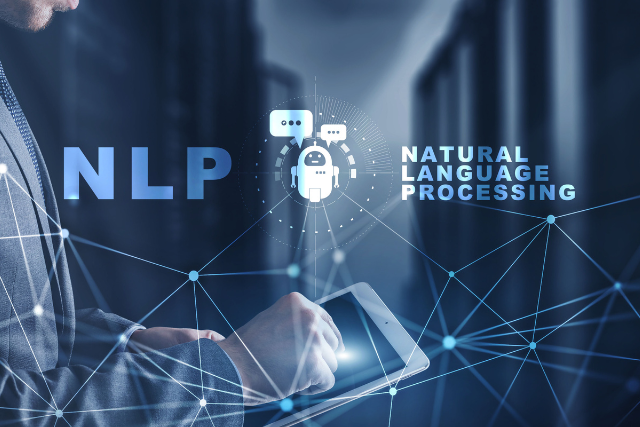The utilization of artificial intelligence (AI) has emerged as a game-changer, revolutionizing various aspects of organizations’ operations. And using artificial intelligence for market intelligence is no exception.
Gone are the days of traditional data gathering and basic automation. We’ve entered a new era of AI-powered market intelligence that’s unlocking a wealth of possibilities.
With AI’s advancements in natural language processing (NLP), machine learning (ML), and deep Learning (DL), market intelligence is undergoing a paradigm shift. This article will dive into the remarkable influence of AI on market intelligence.
And explore how advanced techniques (NLP, ML, and DL) enable enhanced pattern recognition and predictive analytics, leading to deeper insights and more strategic decision-making.
Keep reading to discover how businesses can leverage AL for market intelligence to stay ahead in today’s competitive and data-driven world.
The Rise of AI in Market Intelligence
AI has significantly transformed market intelligence by revolutionizing data gathering and analysis for businesses.
This section provides an overview of how AI is being adopted in market intelligence across industries and showcases examples of its competitive advantage in different sectors.
Overview of the increasing adoption of AI in market intelligence across industries
AI adoption in market intelligence has surged as organizations recognize its potential to enhance their capabilities. Across industries, businesses leverage AI to extract insights, make data-driven decisions, and gain a competitive edge.
AI’s ability to process large datasets, identify patterns, and provide actionable recommendations drives its adoption in market intelligence. Teams now rely on AI-powered tools and platforms to streamline data collection, automate analysis processes, and generate real-time insights.
Examples of AI’s competitive advantage in different sectors
Retail and E-commerce:
AI analyzes customer data to personalize recommendations, optimize pricing, and improve customer experiences. It also enhances inventory management and reduces stockouts, leading to increased sales and customer satisfaction.
Healthcare:
AI analyzes patient data to improve diagnosis accuracy, identify disease patterns, and predict treatment outcomes. AI-powered chatbots and virtual assistants enhance patient interactions and engagement.
Financial Services:
AI analyzes financial data to generate real-time market insights, forecast trends, and support investment decisions. AI-driven fraud detection systems enhance security and minimize financial risks.
Manufacturing and Supply Chain:
AI optimizes production processes, predicts maintenance needs, and identifies supply chain bottlenecks. AI-powered demand forecasting and predictive analytics streamline inventory management and improve operational efficiency.
These examples highlight how AI transforms market intelligence across industries. By leveraging AI, organizations gain insights, identify trends, and make data-driven decisions, gaining a competitive advantage.
AI’s continued advancement presents new growth opportunities in the dynamic business landscape.

Advanced AI Techniques for Market Intelligence
Market intelligence goes beyond data gathering. Advanced AI techniques unlock deeper insights and drive informed decision-making. These techniques leverage AI’s capabilities to process vast amounts of data, identify patterns, and extract valuable insights.
Natural Language Processing (NLP)
A well-known technique in market intelligence is NLP. NLP extracts and analyzes insights from unstructured data sources like customer reviews, social media, and news articles. It uncovers sentiment analysis, identifies emerging trends, and provides a comprehensive understanding of consumer preferences.
A real-world example would be using NLP to analyze and develop insights from hundreds of customer reviews.
Machine Learning (ML):
Businesses use machine learning for market intelligence to analyze large datasets and identify patterns humans may otherwise miss. ML automates complex relationship recognition, customer segmentation, and predictive indicators for market trends.
Successful ML implementation enhances customer segmentation, optimizes pricing models, and improves demand forecasting. Case studies highlight the potential and effectiveness of ML in market intelligence.
Deep Learning (DL)
Deep Learning transforms market intelligence by analyzing complex data and generating predictive insights. DL algorithms process vast amounts of data, extract intricate patterns, and excel in image recognition, natural language understanding, and recommendation systems.
Examples include DL-powered image analysis and personalized recommendation systems, showcasing DL’s power in driving market insights and targeted strategies.
By leveraging NLP, ML, and DL, businesses tap into the vast potential of data, gaining deeper insights into market dynamics, customer behaviors, and emerging trends.
These techniques enable more informed decisions, identify untapped opportunities, and provide a competitive edge. The following sections explore enhanced pattern recognition and predictive analytics capabilities these techniques bring to market intelligence.
Enhancing Pattern Recognition for Deeper Insights
Pattern recognition is fundamental to market intelligence, allowing organizations to uncover meaningful trends, customer behaviors, and competitive dynamics. Artificial intelligence (AI) has increased pattern recognition capabilities in market intelligence, enabling organizations to extract deeper insights from vast and complex datasets.
By leveraging advanced AI techniques such as natural language processing (NLP), machine learning (ML), and deep Learning (DL), market intelligence professionals can enhance their ability to identify and interpret patterns that might otherwise go unnoticed.
Benefits of Pattern Recognition
AI excels at recognizing intricate patterns in large volumes of data, surpassing human capacity in speed, accuracy, and scale. Through AI-driven algorithms, market intelligence professionals can process unstructured data, such as customer reviews, social media posts, and news articles, to uncover hidden patterns and sentiments. NLP, for instance, empowers AI systems to understand and analyze human language, enabling the extraction of valuable insights from textual data.
Organizations can gain a more comprehensive understanding of customer preferences and market trends by identifying patterns in language use, sentiment analysis, and topic modeling.
The benefits of advanced pattern recognition techniques in market intelligence are substantial. AI-driven pattern recognition allows for the early detection of emerging trends, enabling organizations to respond proactively to shifts in the market landscape.
By identifying nascent patterns and understanding their potential impact, businesses can adapt their strategies, develop new products or services, and seize untapped opportunities ahead of their competitors.
Plus, advanced pattern recognition facilitates identifying complex relationships and correlations in datasets, providing deeper insights into customer behavior, market segmentation, and competitive positioning.
Examples of Pattern Recognition
Consider a retail company utilizing ML algorithms to analyze customer purchase patterns. The system could generate personalized recommendations and promotions by identifying recurring patterns, enhancing customer satisfaction, and driving sales.
Or in the financial sector, AI-powered fraud detection systems utilize pattern recognition to identify anomalies in transaction data, protecting customers from fraudulent activities.
These examples demonstrate how AI-driven pattern recognition uncovers valuable insights and empowers businesses to make data-driven decisions that improve customer experiences, operational efficiency, and competitive advantage.
By harnessing the capabilities of AI for pattern recognition, market intelligence professionals can unlock deeper insights, make more informed decisions, and drive business success. As organizations accumulate vast amounts of data, AI-driven pattern recognition becomes increasingly essential in extracting meaningful and actionable information.
By embracing advanced AI techniques, businesses can stay ahead in the ever-evolving marketplace, identify emerging opportunities, and make strategic decisions grounded in comprehensive and accurate insights.

Predictive Analytics: Enabling Future-Focused Strategies
Predictive analytics utilizes advanced algorithms and machine learning to analyze extensive data and forecast future trends. Market intelligence equips businesses to anticipate shifts in consumer behavior, identify emerging market opportunities, and make well-informed decisions in advance.
AI-powered predictive analytics takes market intelligence to new heights by providing organizations with a comprehensive understanding of customer preferences, market dynamics, and competitive landscapes.
Through the analysis of complex datasets and pattern identification, AI algorithms reveal hidden correlations and generate accurate predictions. These insights empower businesses to optimize pricing strategies, predict demand fluctuations, mitigate risks, and proactively respond to market shifts.
Predictive analytics enables organizations to develop future-oriented strategies based on data-backed insights, positioning them for long-term success.
The Human-AI Collaboration: Maximizing Impact
Human expertise is crucial alongside artificial intelligence (AI) to maximize impact. While AI brings computational abilities and data analysis capabilities, combining human knowledge, critical thinking, and contextual understanding unlocks the potential of market intelligence.
By leveraging the strengths of humans and AI, organizations extract deeper insights from data, enabling informed decision-making and strategic advantage.
Both humans and AI make valuable contributions. Humans identify nuances, understand human behavior, and possess domain expertise. AI swiftly processes data, detects patterns, and delivers actionable insights at scale. The combination amplifies the effectiveness of market intelligence, leveraging human intuition and experience with AI’s analytical power.
In collaboration, humans orchestrate AI algorithms, validate results, and make strategic decisions. They refine and contextualize AI-driven insights, ensuring alignment with business objectives.
Humans excel at interpreting emotional and social aspects of consumer behavior, which is challenging for AI systems. Embracing this collaboration allows organizations to harness market intelligence fully, leveraging strengths to uncover opportunities and stay competitive.
The collaboration between humans and AI in market intelligence maximizes impact. Recognizing human expertise alongside AI capabilities empowers organizations to navigate data complexities, gain deeper insights, and make informed decisions.
Actionable Recommendations for Implementing AI-Powered Market Intelligence
To effectively leverage AI in market intelligence, organizations should consider actionable recommendations.
Invest in Robust Data Infrastructure:
Establishing a strong data infrastructure is vital. It involves sourcing high-quality and comprehensive data from internal and external sources, ensuring data accuracy, integrity, and compliance with regulations.
Prioritizing data governance sets the foundation for accurate AI-driven analysis.
Develop AI Talent:
Building a multidisciplinary team comprising data scientists, domain experts, and AI specialists fosters a collaborative environment for effective AI implementation.
Investing in training and upskilling programs enhances existing employees’ data literacy and AI proficiency, ensuring the organization has the necessary talent to drive AI-powered market intelligence.
Insights on Implementation Strategies, Talent Development, and Infrastructure Requirements
Successful implementation strategies are key to maximizing the benefits of AI in market intelligence.
Phased Approach:
Organizations should adopt a phased approach, starting with pilot projects to validate the efficacy of AI techniques in their specific market contexts. (Allowing for iterative improvements and minimizing potential risks associated with large-scale deployment.)
Collaborative Alignment:
Collaboration between business stakeholders and AI experts is crucial throughout the process. By aligning AI capabilities with strategic objectives, organizations ensure that the insights generated are actionable and relevant to their market intelligence goals.
Monitoring and Evaluation:
Regular monitoring and evaluation of AI systems and their impact on market intelligence enable continuous improvement and refinement of the approach. (Ensuring that the organization stays adaptive and responsive to changing market conditions.
Infrastructure requirements are also essential to support AI-powered market intelligence
Scalable and Secure Computing Resources:
Organizations should invest in scalable and secure computing resources, including cloud-based platforms and robust data storage solutions, to handle the computational demands of AI algorithms and manage large datasets.
Advanced Analytics Tools and Technologies:
Investing in advanced analytics tools and technologies facilitates efficient data processing, visualization, and interpretation, enabling organizations to derive actionable insights from their AI-driven market intelligence initiatives.
Partnerships and Industry Awareness:
Establishing partnerships with technology vendors and staying updated with industry trends and advancements contribute to building a competitive advantage in AI-enabled market intelligence.
The practical implications of AI for market intelligence are significant, empowering organizations to gain valuable insights, enhance decision-making, and respond rapidly to market changes.
By following actionable recommendations and investing in the right infrastructure, organizations can unlock the full potential of AI in their market intelligence endeavors, driving competitive advantage and future growth.
Overcoming Challenges and Ethical Considerations
Implementing AI in market intelligence presents challenges that organizations must navigate effectively. One primary challenge is data availability and quality. AI algorithms rely on accurate data, but obtaining relevant and high-quality data can be challenging. Organizations must establish robust data collection processes, ensuring data integrity and reliability.
Another challenge is the need for skilled talent. AI implementation requires data science, machine learning, and advanced analytics expertise.
However, there is a talent shortage in these areas, requiring organizations to invest in training and attracting top professionals. Collaborations with academic institutions and AI-focused partnerships can address this talent gap.
Exploring ethical considerations in utilizing AI for market intelligence:
Ethical considerations are crucial for the responsible use of AI in market intelligence. Organizations must address concerns related to privacy, security, and bias. Respecting user privacy and complying with regulations is essential. Transparent data handling, strong security measures, and obtaining appropriate consent are vital ethical considerations.
Addressing biases is also crucial. Biased training data or algorithm design can lead to discriminatory outcomes. Organizations should monitor fairness and accuracy in evaluating AI models. Diversity and inclusion initiatives in AI development teams can reduce biases and promote ethical practices.
Strategies for responsible and transparent use of AI in market intelligence:
Organizations can adopt strategies to ensure the responsible and transparent use of AI in market intelligence. Establishing clear guidelines and policies is essential, addressing ethical principles, data privacy, security, bias mitigation, and compliance.
Achieve transparency by providing clear explanations of AI usage and algorithms. Openness about data sources, processing methods, and decision-making criteria builds trust and informs stakeholders.
Ongoing monitoring and evaluation of AI systems are important. Regular audits and assessments identify biases, errors, and unintended consequences. Collaboration with external auditors or ethical review boards offers independent perspectives.
Organizations ensure effective and responsible AI-driven market intelligence by proactively addressing challenges and integrating ethical considerations. This approach fosters trust, promotes ethical decision-making, and navigates the evolving AI landscape.

Looking Ahead: Future Trends and Possibilities
Emerging trends in AI and their impact on market intelligence:
Examining emerging trends in AI and their implications for market intelligence is crucial for the future. One notable trend is the increasing sophistication of AI algorithms, driven by advancements in deep learning and neural networks.
These advancements enable a more accurate and nuanced analysis of complex market data, uncovering deeper insights and informing better decisions. Integrating AI with emerging technologies like IoT and blockchain presents new opportunities for real-time data gathering and ensuring data integrity and security.
Future advancements and implications for businesses:
Future advancements in AI have the potential to revolutionize market intelligence. Predictive modeling and forecasting are areas poised for growth. As AI algorithms become more sophisticated, organizations can anticipate market trends, customer behavior, and competitive dynamics with greater accuracy.
This predictive power empowers businesses to adapt strategies, optimize resources, and seize opportunities. AI-powered virtual assistants and chatbots in market intelligence tools may enhance data accessibility and provide conversational and intuitive insights.
Conclusion: Harnessing Artificial Intelligence for Market Intelligence
AI has a profound and transformative impact on market intelligence. Advanced techniques like natural language processing (NLP), machine learning (ML), and deep learning (DL) unlock deeper insights, enhance pattern recognition, and enable accurate predictions.
Rather than replacing human expertise, AI is a tool that complements it. The future of market intelligence lies in a collaborative approach where AI augments human capabilities, providing actionable insights.
But businesses must embrace AI, invest in infrastructure, and cultivate talent to gain a competitive edge.
The impact of AI on market intelligence is extensive, going beyond automation. NLP, ML, and DL revolutionize the field, enabling enhanced pattern recognition, predictive analytics, and deeper insights. By adopting AI, organizations can make data-driven decisions with precision and confidence.
Businesses must now embrace AI as a necessity rather than a luxury. By investing in the right talent, infrastructure, and AI technologies, companies can leverage AI’s full potential and stay ahead in the rapidly evolving market landscape.
AI-powered market intelligence offers a competitive edge, the ability to anticipate market shifts and unlock valuable insights from vast amounts of data. Embracing AI is the key to driving innovation, shaping strategies, and achieving sustainable growth in the digital age.
